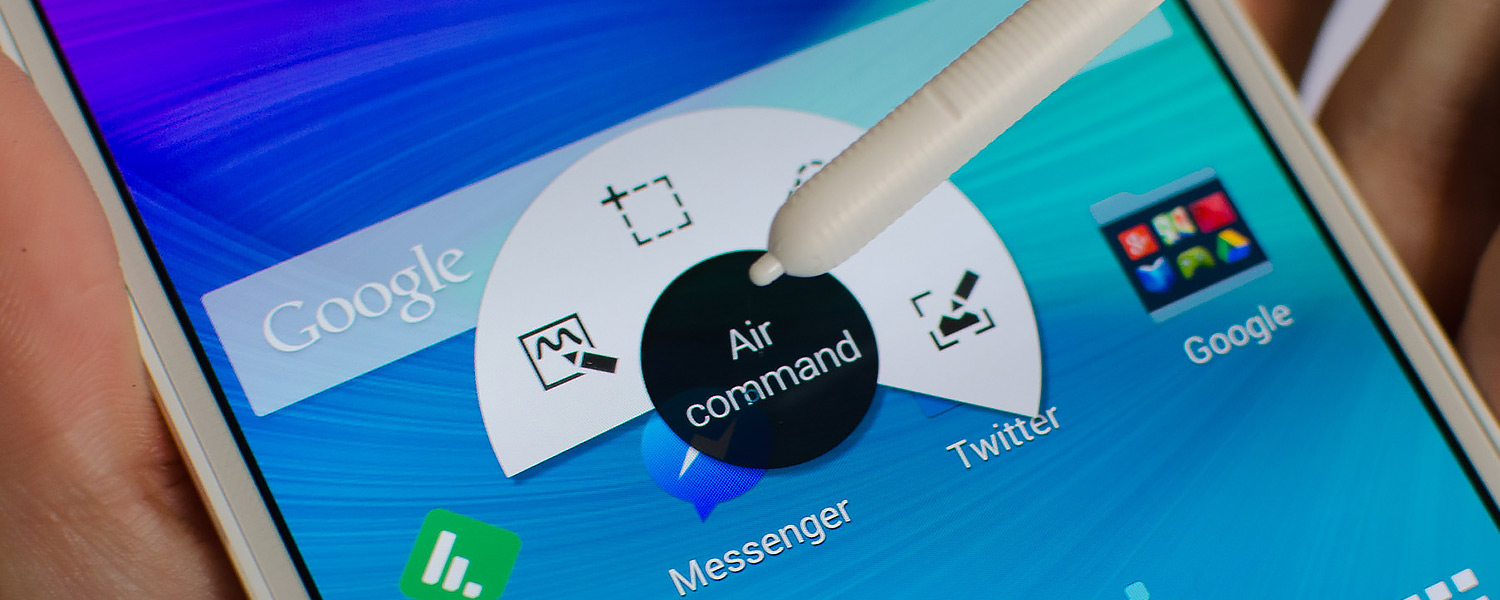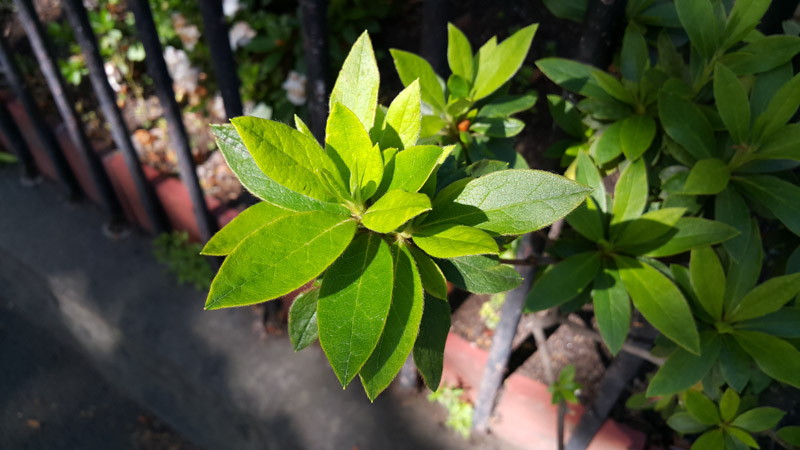Camera: 16 Megapixel Image Quality
Despite both the Galaxy Note 4 and Galaxy S5 packing a 16-megapixel camera, internally the hardware is slightly different. The S5 used a Samsung S5K2P2XX CMOS, while the Note 4 switches back to Sony and uses an IMX240 sensor. The specs between the two sensors are largely the same: 1/2.6" in size, a native aspect ratio of 16:9, a pixel size of 1.12 µm, and a maximum resolution of 5312 x 2988. The IMX240 is paired with an f/2.2 lens with a 35mm-equivalent focal length of 31mm, and, finally, we're getting optical image stabilization (OIS).
The front camera is a Samsung S5K6D1YX, which is a 3.7-megapixel 1/5.4" CMOS with 1.12 µm pixels, capable of capturing 2560 x 1440 images in a native 16:9 aspect ratio. This is a tidy update on previous selfie cameras Samsung has deployed, and allows the Note 4 to capture front-facing images that will display natively on the device's screen. The sensor is paired with a 23mm f/1.9 lens.
Right off the bat, the Galaxy Note 4 is an excellent smartphone camera. The addition of OIS assists with photography across the board (not just in low light), and improvements to image processing make the camera more accurate than ever before.
The Note 4 is a superb shooter in good lighting. Whip out the camera in strong sunlight and you'll find vibrant yet accurate color representation and very decent dynamic range for such a small sensor. Metering is absolutely perfect, leading to shots that I always felt had spot on white balance, tone and exposure. The f/2.2 lens provides decent bokeh as well, and although it's not as pleasant as wider apertures, macro shots can look quite good.
Autofocus from this camera system is quick and accurate, and combined with above average camera optics leads to sharp 16-megapixel images. Samsung has toned down the sharpness filter applied post-capture compared to the Galaxy S5, landing in a sweet zone between being oversharp or too soft. Unfortunately some of the other filters Samsung has applied reduce fine detail, and this is especially noticeable on wide shots, however this sort of fine detail is typically lost on most smartphones I've seen.
So long as you don't zoom in too far on your wide shots, the 16-megapixel sensor provides enough headroom for cropping and zooming, though images do look at their best when kept uncropped and downscaled to the display you're viewing them on. I can't see many manufacturers progressing past 16-20 megapixels on current smartphone sensors for some time, especially with current CMOS technology.
One thing I noticed with the Note 4 is that the Gallery app applies a noticeable sharpening filter to all images displayed in it. This is likely to compensate for the reduction in sharpening in the images themselves, and to really highlight the quality of the Quad HD display when viewing photos, albeit in a way that cheats. I definitely prefer how the sharpening occurs on the device side rather than the photo side, though ideally neither would happen (and to be honest, Samsung, your display is sharp enough as is that the sharpening filter isn't warranted).
Moving to less ideal photography conditions and the Galaxy Note 4 still shines. This is largely due to OIS, which compensates for minor shakes when capturing images and allows the camera's software to use low shutter speeds without risking a blurred image. With the Galaxy S5, the camera tended to use a shutter speed that was too low in poor conditions, causing many photos to be blurred. This doesn't happen with the Note 4.
Not only are photos taken on cloudy days or indoors well exposed and not particularly grainy, but they also feature good color saturation and accurate tone. Expect sharpness as well, and not nearly as many post-processing artefacts as you would have seen with the S5. OIS is simply a massive inclusion for this camera array, and allows Samsung to take the Note line's camera capabilities to the next level.
Photos taken at night with past Samsung smartphone cameras tended to be unusable, but that's not the case with the Note 4. The device performs well after the sun goes down, taking photos that allow you to actually see what's going on. The small size of pixels in the sensor means that results aren't as good as you'd see on the HTC One M8 or iPhone 6 Plus, though I'm happy to say that the Note 4 competes in this area.
The rear camera also comes with a single-tone, single-LED flash. Like most smartphone flashes, the Note 4's flash is only suitable in emergency situations, as it has a tendency to wash out close subjects, and it's ineffective on subjects that are further away.
As for the front-facing camera, the upgrade from 2.0- to 3.7-megapixels is respectable, providing an extra level of detail that can be displayed natively on the Note 4's Quad HD panel. A focal length of 23mm gives it a field of view that's large, allowing multiple people to fit into a single selfie. I was also pleased with the color quality from this camera, though it's not a patch on the rear shooter.
















